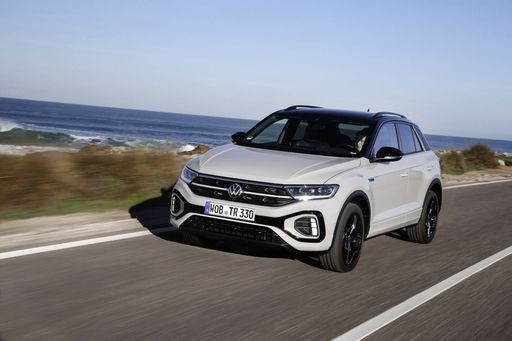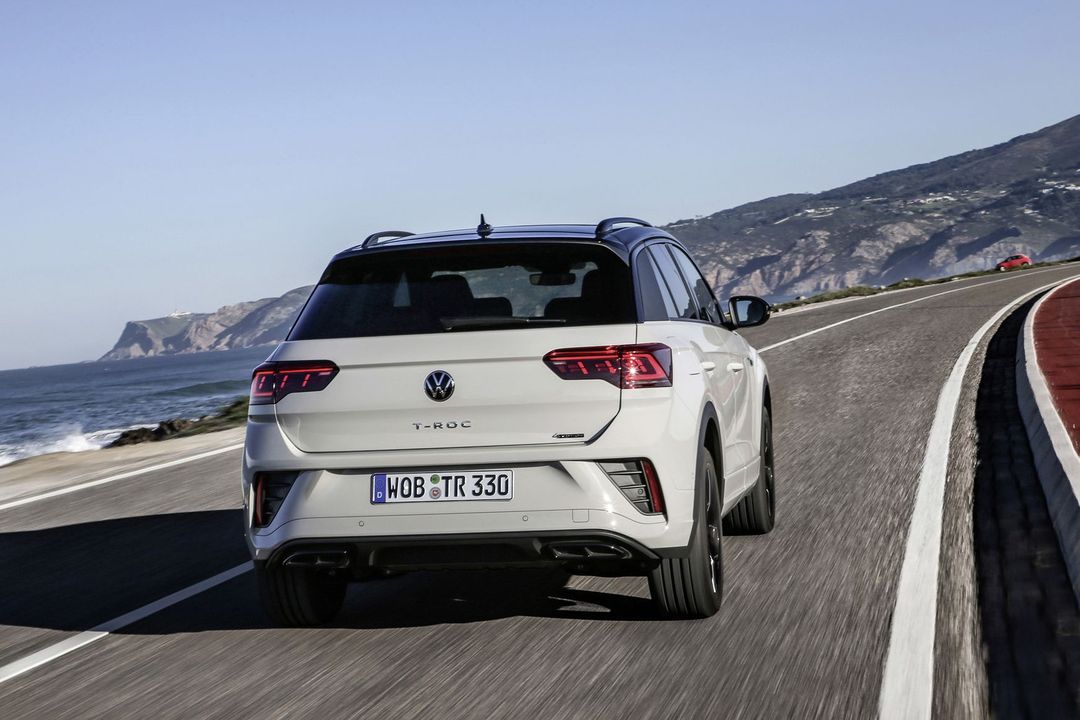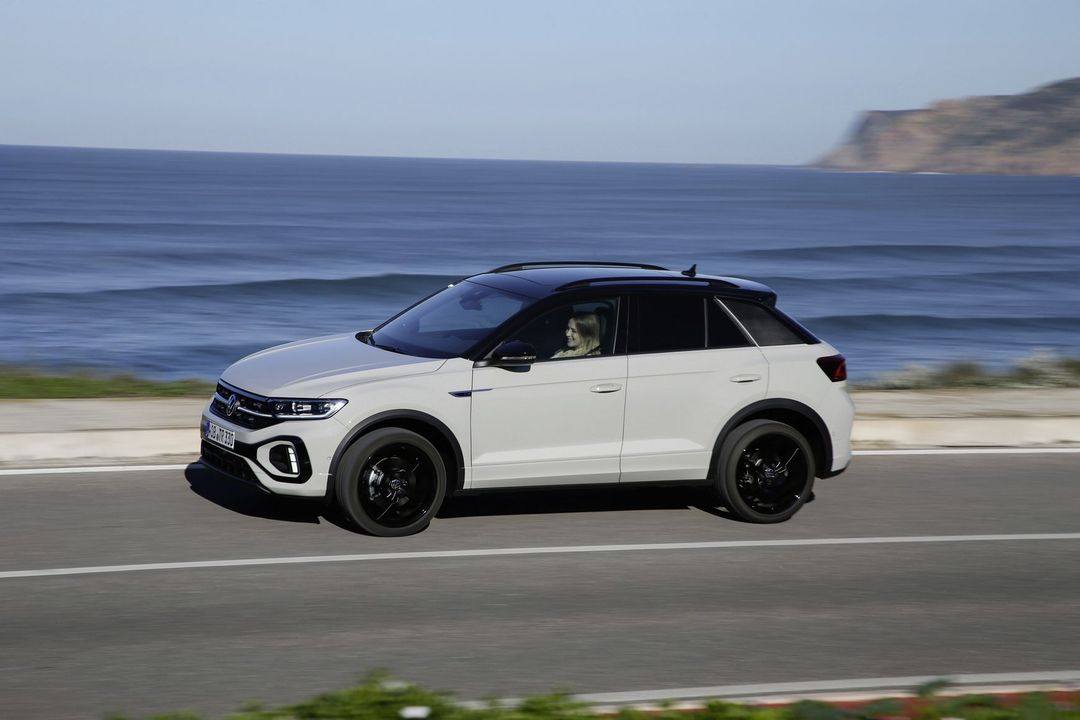Design & Presence
The VW T‑Roc looks like a compact SUV that decided to wear a coupe jacket — a short bonnet, crisp creases and an assertive face give it genuine kerb appeal without shouting. Proportions are compact (length roughly 4.27–4.37 m depending on version) so it slips into city parking yet sits confidently on the road. A cabriolet option adds open‑top drama for those who want it, while contrast roofs and wheel choices let buyers personalise the look.





